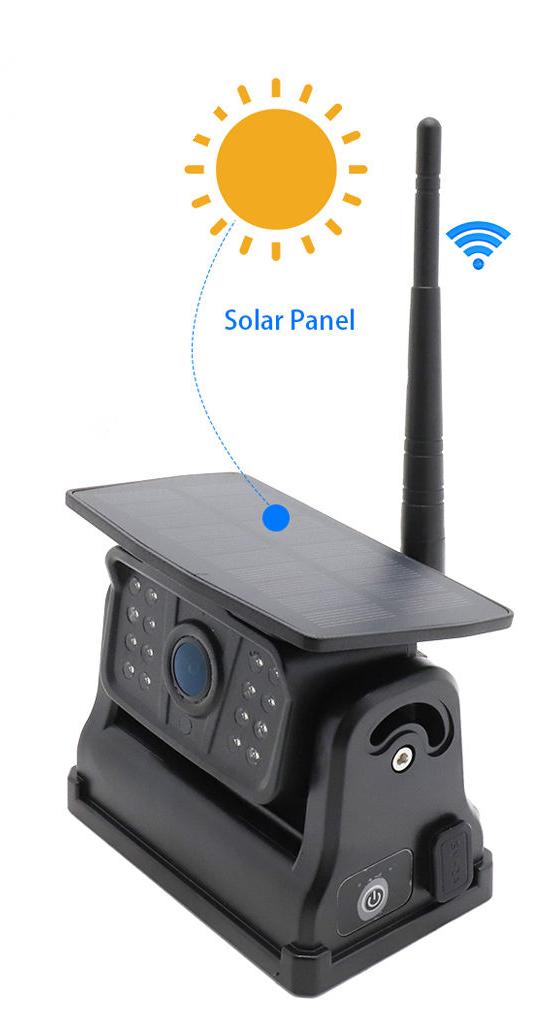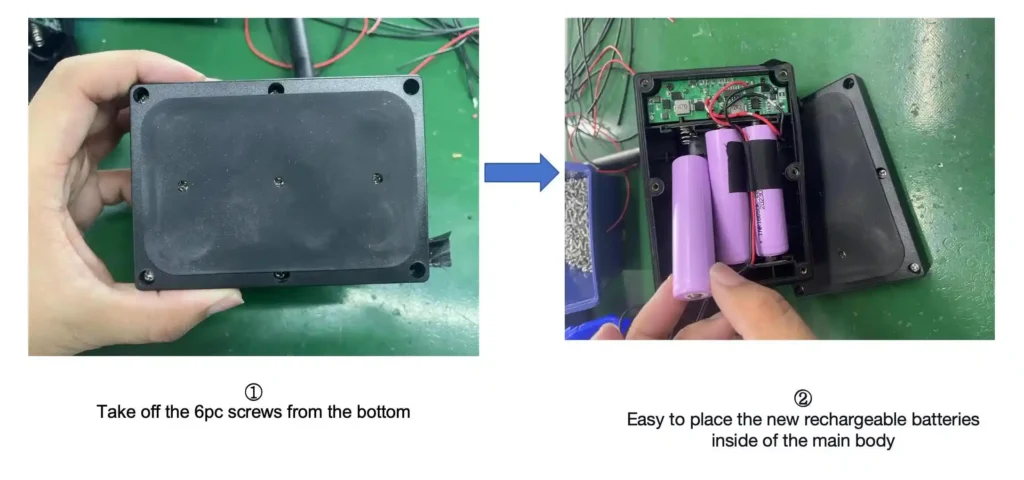Magnetic wireless backup cameras offer superior ease of installation, flexibility in positioning, and more convenient power options, making them an ideal choice for specialized vehicles. In this article, we will explore the reasons behind choosing magnetic wireless cameras and the specific conditions where they are most advantageous.
Magnetic Backup Cameras VS. The Cameras Without a Magnetic Base.
Magnetic backup cameras offer significant advantages in terms of installation, agricultural machinery, and construction machinery. The magnetic base allows these cameras to attach directly to any metal surface, eliminating the need for drilling or using screws, which greatly simplifies the installation process. Additionally, the camera's position can be adjusted or relocated as needed, providing high flexibility. This is particularly useful for these types of vehicles where work environments change, and visibility requirements may shift frequently. A magnetic camera ensures that you can quickly adjust its position to maintain an optimal view.
In contrast, cameras without a magnetic base typically require fixed installation using screws, adhesive mounts, or brackets. Once installed, it’s much harder to move them, which limits the adaptability to changing needs. If the camera needs to be repositioned, it often requires disassembly and reinstallation, which is more time-consuming and less convenient than magnetic-based systems.
Regarding power supply, magnetic cameras often feature built-in rechargeable batteries. This is particularly advantageous for vehicles where wiring is impractical or difficult, such as agricultural machinery or heavy construction equipment.
The Categories of Magnetic Backup Cameras
a. magnetic battery backup camera with solar panel
A solar magnetic battery backup camera harnesses solar energy to continuously charge itself when exposed to sunlight. This feature not only extends the operational time of the camera but also reduces the need for frequent manual charging or reliance on external power sources. By utilizing solar power, the camera can function for longer periods, even in remote or off-grid locations, making it an efficient and environmentally friendly solution.

b. magnetic backup camera with built-in battery
The magnetic battery backup camera is equipped with a 10,050 mAh battery, providing enough power for up to 18 hours of continuous operation. This high-capacity battery ensures reliable performance over extended periods, making the camera ideal for long shifts, extended workdays, or situations where access to power is limited. The magnetic base further enhances the convenience, allowing for easy placement and repositioning as needed.

c. magnetic backup camera without built-in battery
Since the magnetic backup camera does not have a built-in battery, it draws power directly from the vehicle’s electrical system or an external power bank. This setup ensures continuous operation as long as the camera is connected to a power source, making it suitable for vehicles where a stable power supply is readily available. The lack of an internal battery also allows for a lighter design and easier maintenance.

The Application of Wireless Magnetic Backup Cameras
Magnetic backup cameras are highly applicable for use in forklifts, construction machinery, and agricultural machinery where wiring is impractical or difficult. These vehicles also often operate in complex environments where visibility is critical for safety and efficiency. The magnetic base allows for quick and easy installation on any metal surface without the need for permanent mounting, making it ideal for machinery that requires frequent repositioning of the camera.

Key Considerations for Magnetic Backup Cameras
1. Magnetic Strength
The magnetic strength is one of the most critical factors when choosing a magnetic backup camera. It determines how securely the camera can attach to the vehicle. A strong magnetic base ensures that the camera stays in place even when the vehicle is in motion or operating in rough conditions, such as bumpy roads or uneven terrain. For heavy-duty vehicles like forklifts, construction machinery, or agricultural equipment, the camera must have a sufficiently strong magnetic grip to avoid shifting during operation.
2. Battery Capacity
Battery capacity is essential for determining how long the camera can operate without needing a recharge. A larger capacity, such as a 10,050 mAh battery, can allow the camera to work for 18 hours at least. This is especially important for vehicles used in extended work shifts or in locations where access to charging may be limited. Consider a backup camera with a battery that suits your operational needs to ensure continuous monitoring.
3. Regular Battery Replacement
Although many magnetic backup cameras feature rechargeable batteries, it’s important to factor in the need for regular battery maintenance or replacement over time. Batteries naturally degrade with use, so checking battery health and performance regularly is crucial to ensure the camera functions reliably. We recommend replacing the battery annually to ensure optimal performance and longevity of the magnetic backup camera

4. Waterproof Rating
Waterproofing is a critical consideration for cameras used in outdoor environments, especially for agricultural machinery or construction vehicles that may operate in rain, mud, or dusty conditions. A high waterproof rating, such as IP68 or higher, ensures that the camera can withstand exposure to water, dust, and other environmental factors without damage. This feature prolongs the camera’s lifespan and ensures reliable operation in harsh conditions.
5. Certified Charger of Magnetic Battery Camera
Using a certified charger is essential to maintain the longevity of the camera’s battery and ensure safe charging. Certified chargers meet specific safety standards, reducing the risk of overheating, short circuits, or battery damage.
For example, when shipping to Japan, the battery must have PSE certification. Without this certificate, the products may be confiscated by customs, and the company could face significant penalties. This certification ensures compliance with Japanese safety standards, making it a critical requirement for exporting products with batteries to the region.

Conclusion
We have explored the benefits of the wireless magnetic battery camera, but it's equally important to consider key factors before making a purchase. We hope this article has addressed any concerns you may have had. If you still have questions or need further clarification, feel free to reach out to our experts at VisionSafetys. We're here to help!


